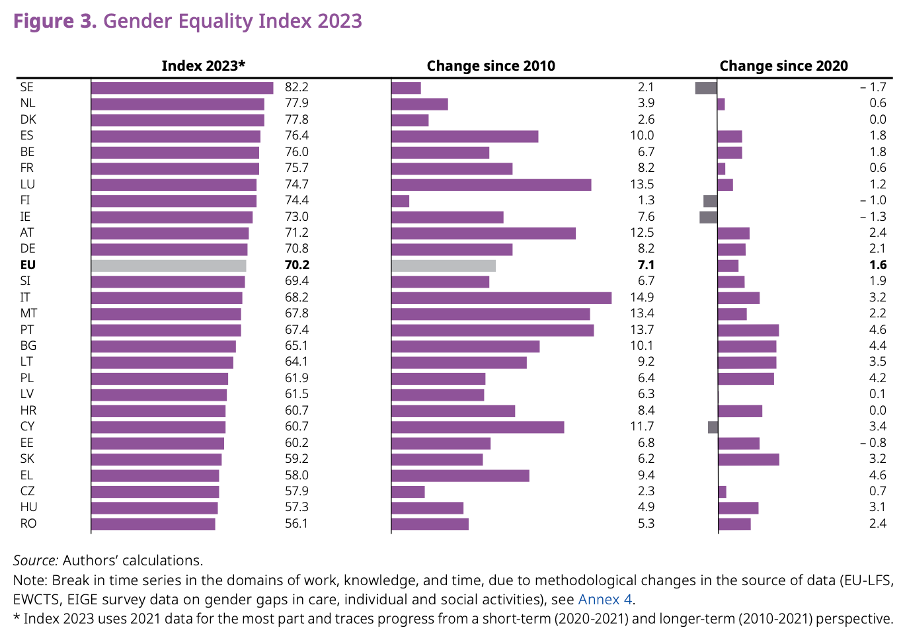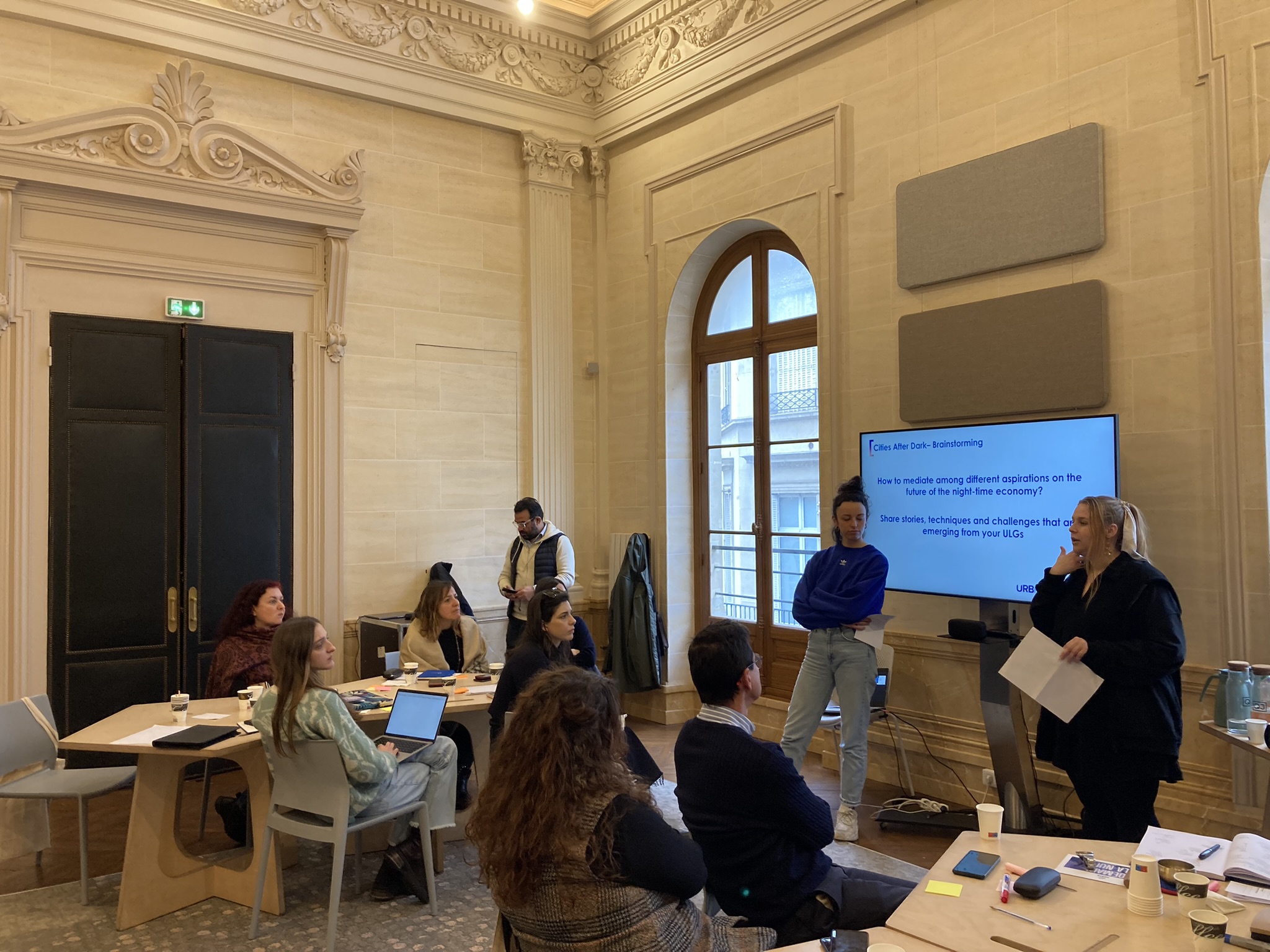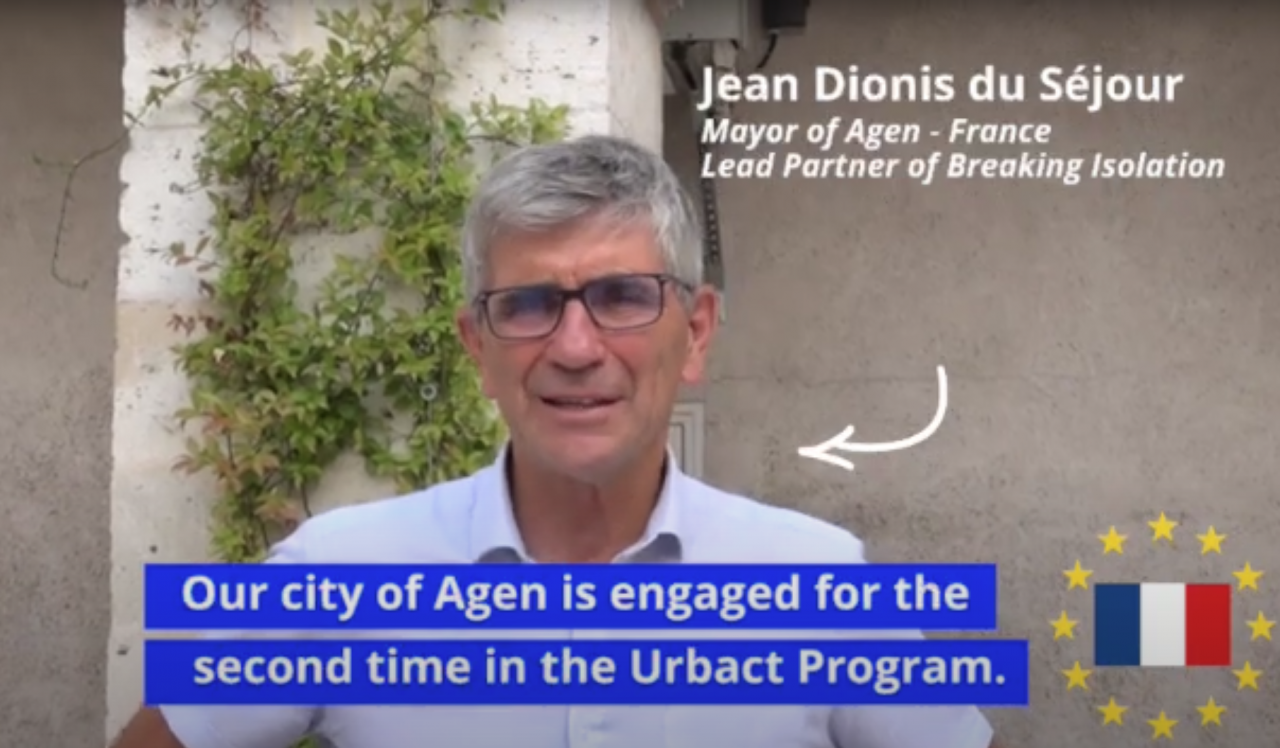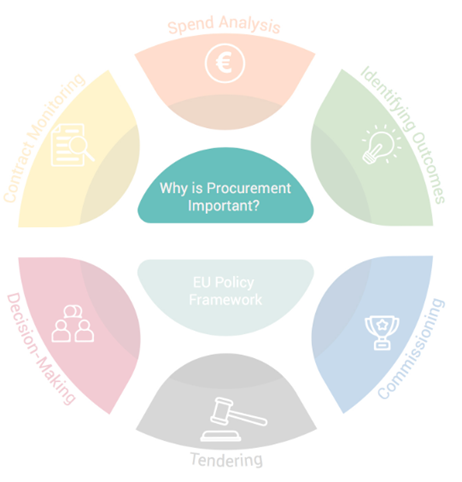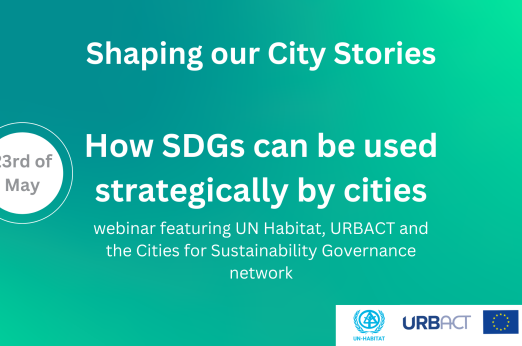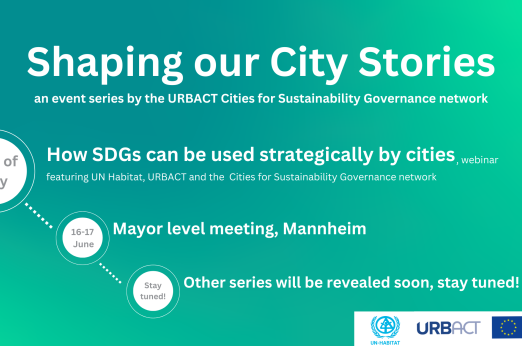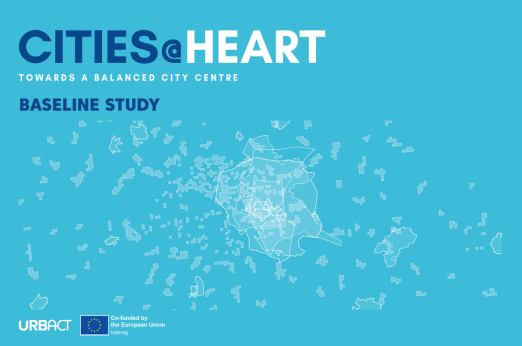La mayoría de las estrategias y agendas urbanas consideran las horas comprendidas entre la primera hora de la tarde y la primera de la mañana como un espacio para el consumo, con una atención significativa a las industrias tradicionalmente asociadas a la noche, como el ocio y la hostelería. Sin embargo, la economía nocturna es también un campo productivo con una serie de servicios que funcionan de noche, como el transporte público, la logística, la recogida de residuos y la sanidad, todos ellos fundamentales para mantener nuestras ciudades plenamente operativas las 24 horas del día, los 7 días de la semana.
Camareros, limpiadores, conductores, enfermeros y trabajadores logísticos son sólo algunas de las categorías profesionales de los trabajadores "de noche". Si observamos el impacto de la economía nocturna en la mano de obra local en todo el mundo: en Nueva York, la economía nocturna mantiene 300.000 puestos de trabajo sólo en el sector de la cultura y el ocio (hostelería, bares, artes, deporte y ocio), mientras que en Londres 1,6 millones de personas trabajan de noche en diversos sectores (191.000 personas trabajan en la sanidad, 178.000 en servicios profesionales, 168.000 en cultura y ocio).
De acuerdo con estas observaciones, la división del trabajo en función del género deja espacio para las desigualdades en la economía nocturna. Sólo el 38% de los trabajadores nocturnos de Londres son mujeres, y las estadísticas no tienen plenamente en cuenta las responsabilidades asistenciales que asumen mayoritariamente las mujeres en casa durante las horas nocturnas.
Reformar el funcionamiento nocturno de las ciudades para las mujeres es clave para mejorar la empleabilidad y la sensación de seguridad, pero también para contrarrestar cualquier forma de acoso sexual y promover la igualdad de género mediante nuevos servicios y funciones.
Todos a bordo por unas ciudades más seguras
Favorecer el acceso de las mujeres a mejores empleos nocturnos es un reto que debe abordarse en varias dimensiones en las ciudades. La percepción de la seguridad en los espacios públicos es un elemento decisivo que también afecta a las elecciones laborales de las mujeres. Según el Informe 2023 sobre la calidad de vida en las ciudades europeas, las mujeres tienen menos probabilidades que los hombres de sentirse seguras en la ciudad por la noche (67% frente a 72%).
El acceso a modos de transporte público frecuentes, seguros y fiables es un aspecto crucial para reducir las desigualdades en el acceso a la economía nocturna. "Las mujeres suelen rechazar trabajos debido a los turnos de noche. Esperar un autobús nocturno o un tren por la noche puede ser muy problemático, y a menudo nos impide a las mujeres utilizar estos modos de movilidad, obligándonos a gastar mucho más que los hombres para volver a casa de una forma más segura con los servicios de taxi o de transporte compartido. El uso de soluciones TIC podría ser útil para analizar cómo utilizan las mujeres el transporte nocturno, pero también para crear aplicaciones más sencillas para denunciar el acoso y la violencia que se producen en el transporte público", afirma Nourhan Bassam, urbanista y autora de The Gendered City.

Autobús nocturno en Tallinn. Fuente: Cities After Dark.
El proyecto piloto de autobuses nocturnos puesto en marcha por Tallin (EE), uno de los socios de Cities After Dark, de mayo a septiembre de 2023 ofreció un importante servicio para trabajadores y fiesteros, con cuatro líneas que conectan el centro de la ciudad con distintos barrios periféricos. "Los autobuses nocturnos pueden ser cruciales para mejorar la sensación de seguridad de las mujeres por la noche, ofreciendo una alternativa sostenible y segura para desplazarse al trabajo o simplemente para disfrutar de la ciudad por la noche", afirma Natalie Mets, asesora nocturna de Tallin y coordinadora del Grupo Local URBACT.
Abordar la brecha de género en los desplazamientos nocturnos es una prioridad compartida por ciudades de todo el mundo. En Bombay, el proyecto SafeCity pretende crear experiencias urbanas y de movilidad más seguras para todos mediante el análisis de datos recogidos con encuestas en línea y auditorías de diseño urbano sobre cómo se mueven las mujeres por las calles, mercados e intercambiadores de transporte de noche. El proyecto, apoyado por la Universidad de Stanford, Vital Voices y el Departamento de Estado de EE.UU., elaboró diez principios que pueden reproducirse en otros contextos urbanos. Entre ellos figuran la participación activa de las mujeres en proyectos de diseño urbano, la organización de paseos nocturnos colectivos para volver a casa con seguridad y el fomento de la participación de las mujeres en la mano de obra urbana nocturna. El aumento de la presencia de mujeres taxistas por la noche en una ciudad como Bombay es un ejemplo de que los servicios de taxi exclusivamente femeninos han adquirido una visibilidad considerable en la última década.
Cuanto más sabemos: Formación y educación para mejorar las condiciones de trabajo
Si una ciudad quiere garantizar el derecho a la noche para todos, es crucial concienciar, desde los trabajadores hasta los asistentes a las fiestas, sobre cómo prevenir y contrarrestar cualquier forma de acoso sexual. Según un estudio de la Agencia Europea de Derechos Fundamentales, el 90% de las víctimas de acoso sexual son mujeres, y 1 de cada 3 mujeres ha sufrido violencia física o sexual durante su vida adulta.
Para hacer frente a la sensación de inseguridad que experimentan muchas mujeres mientras viajan y trabajan, Londres (Reino Unido) lanzó la Carta de Seguridad Nocturna de las Mujeres. Esta carta compromete a las organizaciones, locales y empresas firmantes que operan por la noche a diseñar espacios públicos y lugares de trabajo más seguros para las mujeres, nombrar a un defensor dentro de la organización responsable de promover la seguridad nocturna de las mujeres, promover campañas de comunicación sobre estos temas y formar al personal para garantizar que se registran y responden todas las denuncias de acoso presentadas por mujeres. El alcalde Sadiq Khan ha invertido más de 100.000 libras (unos 117.000 euros) para desarrollar actividades de formación, actos para compartir buenas prácticas y recursos de apoyo a los firmantes voluntarios. Entre estos recursos, se ha elaborado, en colaboración con la campaña nacional por una vida nocturna más segura "Good Night Out", el conjunto de herramientas de la Carta de Seguridad Nocturna de las Mujeres, con el fin de ofrecer ideas e inspiración para poner en práctica los compromisos, haciendo especial hincapié en la mejora de las cualificaciones del personal y en formas innovadoras de comunicarse con los clientes.
En París (FR), la ONG Consentis, socia de la red URBACT Cities After Dark, une fuerzas con el Consejo de la Noche de la ciudad (Conseil de la nuit) para mejorar la seguridad en los eventos públicos, donde afirman que el 60% de las mujeres han sido víctimas de agresiones sexuales o violencia. Organizan actividades de formación para artistas, personal y organizadores, y colocan puestos temporalmente en el exterior de discotecas populares, locales de música y festivales. "Nuestra estrategia consiste en aprovechar la oportunidad para hablar del consentimiento sexual en eventos y festivales, porque los clubes y espacios culturales son lugares a los que la gente acude con ánimo festivo y está abierta a escuchar mensajes positivos", explica Julie Lalloué, coordinadora de Consentis y miembro del Grupo Local de la red en París. Difundir información sobre la cultura del consentimiento en lugares alegres no es sólo una forma de reducir el acoso durante los eventos, sino también de educar a la gente para que se comporte mejor en los espacios privados, en una ciudad como París donde la mayoría de los delitos violentos que se producen por la noche tienen lugar en propiedades privadas.
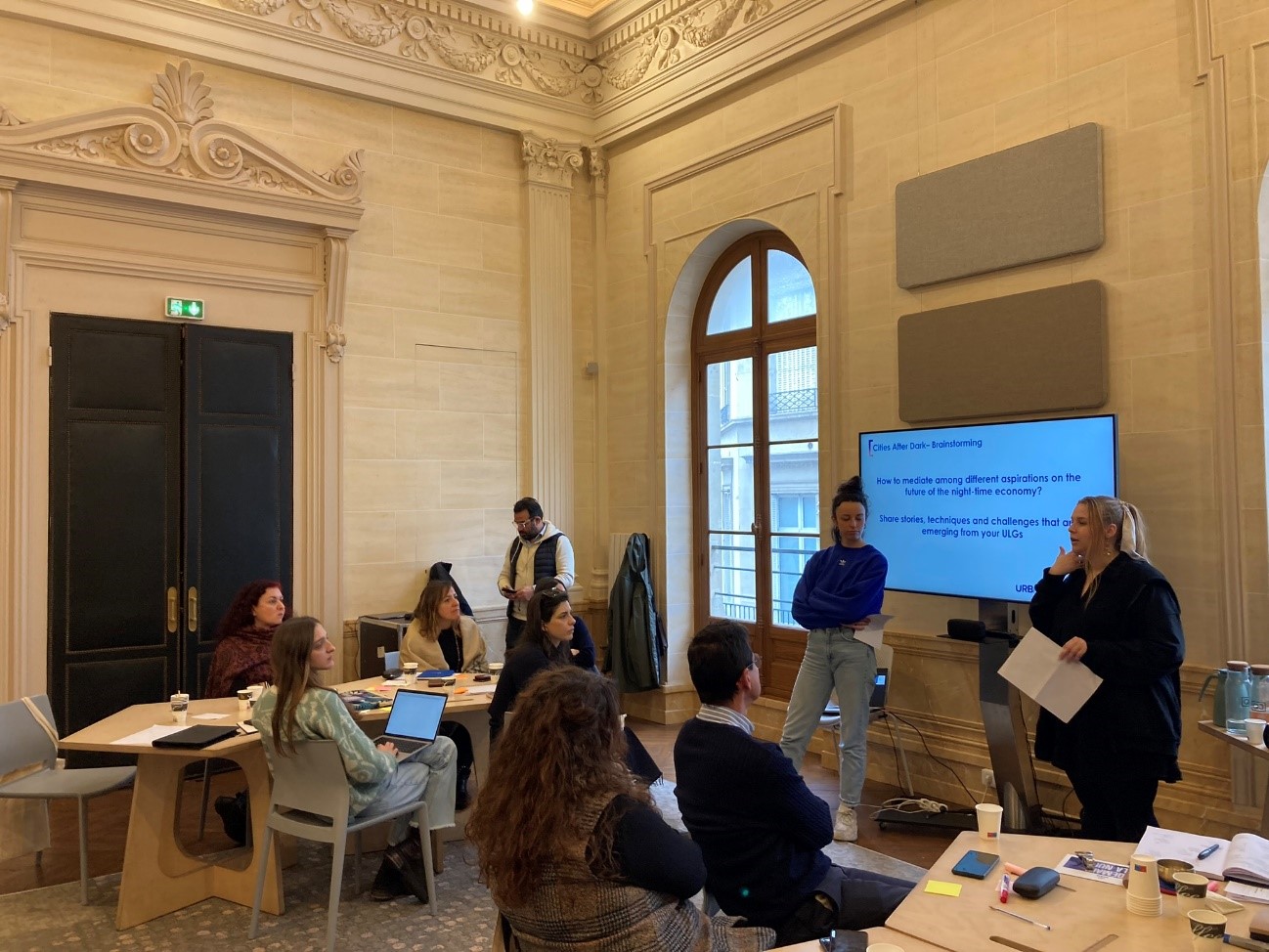
ONG Consentis. Fuente: Cities After Dark
Mejorar la seguridad de las mujeres que trabajan en el sector del ocio nocturno es otra prioridad clave para Consentis, que promovió la campaña Réinventer la nuit (Reinventar la noche) en octubre de 2023 para contrarrestar la violencia sexual contra los DJ. Se lanzó un manifiesto para promover una serie de principios para que el trabajo cultural nocturno sea más seguro para las mujeres y las personas LGBTQi. La campaña también ha producido una serie de protocolos para la seguridad de artistas y locales de música destinados a crear un mejor entorno de trabajo a través de medidas de prevención y concienciación para diferentes grupos, como asistentes a fiestas, organizadores de eventos y agencias de contratación.
La aplicación de medidas para mejorar la seguridad en bares y discotecas también puede hacer que estos locales sean más acogedores para las mujeres. "En una serie de talleres que organicé en Barcelona me sorprendió ver que las jóvenes decían sentirse más seguras en las calles de la ciudad que dentro de un club. Normalmente pensamos que es mejor estar dentro, pero no siempre es cierto. La calidad de los locales suele ser mala: no hay baños funcionales ni control sobre quién tiene acceso a estos locales. Es un tema muy delicado que hay que gestionar con el uso de datos cualitativos para saber quién y cómo utiliza estos locales por la noche", afirma Andreina Seijas, asociada de Gehl e investigadora sobre gobernanza y planificación nocturna.
Nuevos servicios y oportunidades para las mujeres
La creación de servicios innovadores para apoyar la empleabilidad y, más en general, la calidad de vida de las mujeres por la noche es también un elemento importante de las estrategias urbanas sobre economía nocturna. Braga (PT), socio principal de la red URBACT Cities After Dark, está a punto de poner en marcha la primera guardería 24 horas a partir de septiembre de 2024. El Clube do Pequenos (literalmente, Club de los Pequeños ) está cerca de la Universidad del Miño y del hospital de la ciudad y acogerá a niños desde el nacimiento hasta los tres años. Este servicio será especialmente útil para los padres que trabajan en los servicios sanitarios y educativos, aliviando a las mujeres que comparten la mayor parte de las responsabilidades de cuidado de los niños y otros familiares vulnerables o ancianos después del anochecer: según el Índice de Igualdad de Género 2019 del EIGE, en Portugal el 87% de las mujeres cuidan de su familia durante 1 hora o más al día, en comparación con el 79% de los hombres, mientras que alrededor del 78% de las mujeres cocinan y realizan tareas domésticas todos los días al menos durante una hora, en comparación con solo el 19% de los hombres, lo que se encuentra entre las brechas de género más amplias de la UE.

Guardería nocturna. Fuente: Cities After Dark
Espacios públicos dinámicos para que las mujeres ocupen su lugar
El acceso de las mujeres a la economía nocturna implica no sólo una mejor planificación de los espacios públicos y las zonas verdes, con sistemas de iluminación y seguridad, sino también estrategias para mantener estos espacios públicos animados por la noche con actividades culturales y comerciales, precisamente fomentando la participación de las trabajadoras y otros usuarios en la economía nocturna. Así lo ejemplificó el proyecto ToNite de la UIA de Turín (IT), que financió 20 microproyectos para reactivar los espacios públicos de las zonas suburbanas a lo largo del río Dora con festivales de teatro, proyecciones de películas, actividades deportivas y programas de idiomas a los que asistieron sobre todo mujeres de comunidades inmigrantes. Las actividades organizadas en calles y parques públicos dieron una respuesta positiva a las diferentes generaciones de mujeres que reclamaban espacios públicos por la noche, aumentando su participación en el ámbito público.
Los autobuses nocturnos de Tallin antes mencionados son un servicio permanente a partir de este año (2024), un logro clave para la asesora nocturna. Esto habla de la mayor atención que prestan las mujeres con responsabilidades de gobierno en la economía nocturna a la mejora de los servicios para la seguridad y la calidad de vida de las mujeres por la noche. Un estudio realizado a nivel mundial entre alcaldes y asesores nocturnos en 2018 mostró que solo el 26% eran mujeres, pero algo está cambiando. "La planificación urbana ha sido tradicionalmente un campo dominado por hombres, pero es interesante notar que cada vez más mujeres se están involucrando como líderes en la economía nocturna y están teniendo mayor influencia en la gobernanza de este sector porque muchas de ellas trabajan en el ámbito cultural o en espacios queer, por lo que pueden aportar una nueva perspectiva", dice Andreina Seijas.
Aunque la brecha de género puede persistir, no es insalvable gracias a las estrategias urbanas locales y a los nuevos servicios destinados a hacer de la economía nocturna una palanca de crecimiento, sostenibilidad e igualdad en las ciudades.
Siga a la red Cities After Dark en su página oficial y en LinkedIn para más inspiración.
Para más inspiración sobre la igualdad de género en la política urbana, visite la página de la red FEMACT-Cities y GenProcure y explore el Centro de Conocimiento de Ciudades con Igualdad de Género.
Este artículo ha sido traducido de la página de URBACT cuyo autor es Simone d'Antonio
